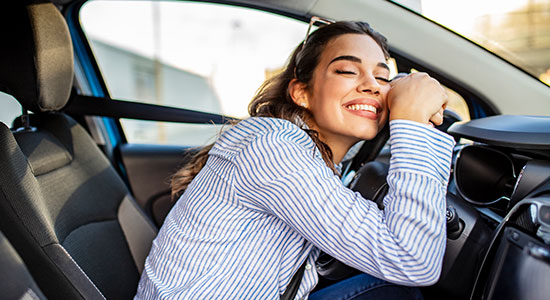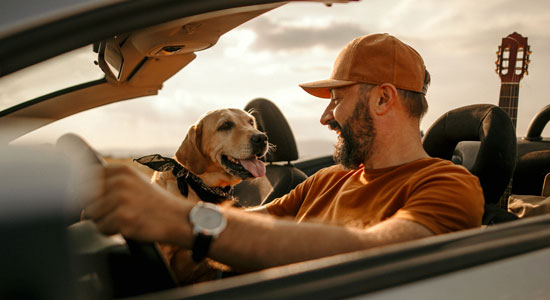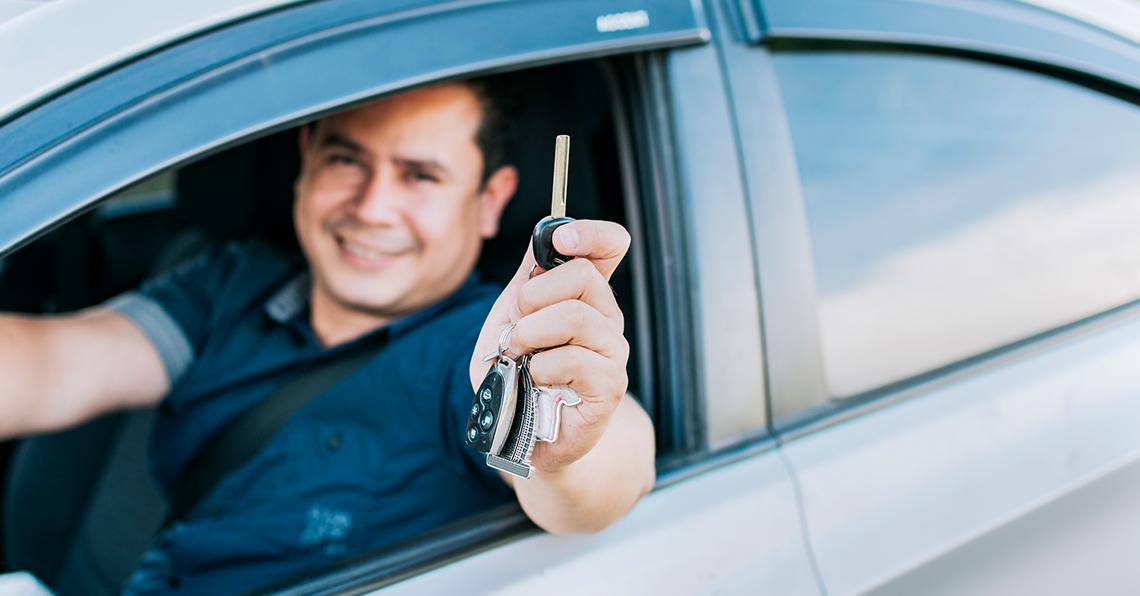
Purchasing a vehicle is exciting! Whether you did your research for months before buying or simply walked onto a lot and found “the one,” it’s fun to be driving something "new" to you. After the test drive, negotiations and payment details have been handled, it might be tempting to think you’re done. However, there are several more important steps you need to take after buying a used car.
1. Insure it. If you have other insurance in place already, such as existing auto, homeowners or renters insurance, you can start with your current agent to get a quote on adding your new vehicle. Alternatively, now might be a good time to shop around to see if you can find a better deal. If you financed the vehicle, you’ll be required to carry full coverage protection, including liability, comprehensive, and collision. Failure to get adequate coverage can be costly, as it can put your loan in jeopardy or your lender could add force-placed insurance, which is significantly more expensive than insurance you purchase on your own. If you financed your vehicle through Solarity, you’ll need to upload your proof of insurance to State National Insurance Company. No one plans to get into an accident, but if it happens, you’ll certainly be glad you spent time looking for the right coverage to protect your investment.
2. Register it and transfer the title. The Washington State Department of Licensing (DOL) requires all residents to title and register their vehicles. When you purchase from a dealer in Washington, they typically handle this paperwork for you and issue you a temporary registration and tags until the official ones arrive a few weeks later. However, if you purchase from a private owner or an out-of-state dealer, you may need to take care of this yourself, and you only have a short window of time – 15 days – before you risk a fine. Knowing what actions to take after buying a used car can help you avoid unnecessary penalties and ensure your vehicle is legally registered.
3. Figure out a maintenance schedule. While it may seem a bit silly, take a look through your owner’s manual and 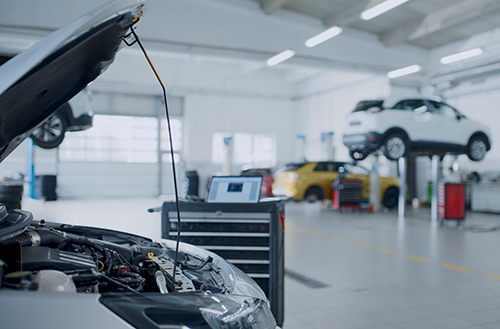 scan it for important information. You don’t need to read it cover to cover, but be sure to take note of features you didn’t know about. The owner’s manual should also include a maintenance schedule with recommendations about how often you should have vital systems repaired or replaced. Check your odometer to see if there are any service milestones coming up. And if your used car came with a warranty, it’s a good idea to stay on top of required maintenance so you don’t void it. Understanding your maintenance schedule is important after buying a used car and can prolong the life of your vehicle.
scan it for important information. You don’t need to read it cover to cover, but be sure to take note of features you didn’t know about. The owner’s manual should also include a maintenance schedule with recommendations about how often you should have vital systems repaired or replaced. Check your odometer to see if there are any service milestones coming up. And if your used car came with a warranty, it’s a good idea to stay on top of required maintenance so you don’t void it. Understanding your maintenance schedule is important after buying a used car and can prolong the life of your vehicle.
4. Get familiar with your car’s features. Here are a few things to check out before you make any extended excursions:
- Location of your gas tank and what type of fuel you should be using
- How to open the hood and where to put important additives such as oil and wiper fluid
- Location of the headlights and any special features such as auto-on or daytime run lights
- How to adjust the speed of your windshield wipers and manage cruise control settings
- How to change the climate control settings and features like heated or cooled seats (this goes for backseat passengers too)
- How to set and disarm the alarm system and any additional attributes such as an interior motion sensor
- Location of the spare tire and jack (or patch kit if you don’t have a spare tire)
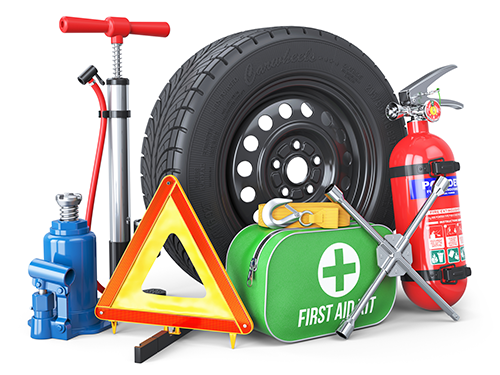
5. Personalize it. Making your car feel like your own space should also be on the list of things to do after buying a used car. Save your seat and mirror preferences (if your car has memory settings for each driver) and input your favorite radio stations. Connect your phone via Bluetooth and make sure you have a charger on board. Finally, stock up on personal and emergency items such as an umbrella, jumper cables, first aid kit, flares, flashlight, reusable shopping bags, bottled water and non-perishable snacks.
6. Schedule your loan payments. Part of knowing what to do after buying a used car is managing your finances effectively. You’ll likely find out fairly quickly when your first auto loan payment is due. Put your future payments on autopilot by scheduling automatic payments. You can do this through your financial institution’s online bill pay feature or through recurring automatic ACH transfers (also known as a PAT or pre-authorized transfer). This set-it-and-forget-it approach comes with a lot of benefits, including peace of mind that you’ll never be late with a payment, which helps keep your credit score healthy and ensures you don’t run into trouble with your lender.
7. Save your paperwork. A vehicle is a big investment, so you’ll want to keep all of your important documents together and in a safe place so you can find them easily. This includes insurance information, loan documents, registration information, warranty agreements, the bill of sale and your title (once your loan is paid in full). It’s also a good idea to keep maintenance records when you have service or repair work done. Find a place inside your car for your proof of insurance and registration. And consider a fireproof safe or other secure location for documents you keep at home. You might not need these documents right away, but down the road, you’ll be glad you know exactly where to locate them.
Knowing what to do after buying a used car ensures you can enjoy your new ride with confidence. No matter where you are in your car-buying or financial journey, Solarity is your partner for the road ahead. When you’re ready for your next vehicle, RV, boat, or other motorized sport vehicle, get in touch with us for the financing you need to fuel your next adventure. Or, if you already have your future car picked out, simply tell your car dealership that you’d like to finance with Solarity!
What's your Solarity story?
We're on a mission to tell the stories of our members and how they are living their best lives. Do you have a Solarity story to share?

